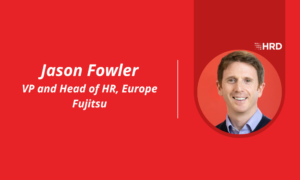Talent intelligence: Taking talent development into another dimension
- 4 Min Read
Armed with talent intelligence gained from a wealth of data sources on skills, roles, and organisational solutions, employers are putting into practice measures to build the workforce of the future. The Josh Bersin Company’s Kathi Enderes explains how.
- Author: Kathi Enderes
- Date published: Nov 28, 2022
- Categories

The skills gap is a growing concern at board level. Our research found that 70% of C-level leaders across all industry sectors believe their skills are falling behind, while more than 80% worry about not being able to hire the right people. All the while, leaders face global economic conditions that would previously have driven high employee retention as working-age populations prioritise financial security.
After the pandemic, this is no longer the case. Working through the pandemic forced many people to review family and childcare arrangements, caused industries to reinvent and transform, and altered the workplace dynamic. Now, critical infrastructure roles such as healthcare staff, lorry drivers, airline and hospitality employees fail to attract new applicants.
Organisations struggle to attract and retain experienced talent in many of these sectors as people have gone elsewhere in search of a more stable working experience, often in a different industry.
Reimagining the employee journey
Leaders need to take a fresh approach to hiring and retention by reimagining the employee journey and taking a smarter, more innovative approach to employee development. How? By creating new career pathways that don’t flow in a single direction.
Before employers can design and build thoughtful career pathways, they need an understanding of existing talent gaps They also need a clearer picture of which employees are likely to become over-stretched and anxious, leading to them becoming steadily less productive—and more likely to leave.
These outward signs of stress may not appear until it’s too late, so companies need timely data. In fact, best practice we’re seeing in organisations suggests that a whole spectrum of ‘talent intelligence’—sourced both internally and externally—is needed.
This ‘talent intelligence’ combines sourcing information, people analytics on engagement, skills and roles data, strategic workforce planning, diversity insights, location intelligence, task-level insights on work activities, and retention analytics to enable more complex correlations and systemic planning straddling multiple HR domains, and enabled by artificial intelligence (AI).
Armed with insights
Traditional methods for combatting talent loss won’t work anymore. In fact, there is no point putting everything into replenishing the talent pool only to recreate a team whose skills are frozen in the past.
Current skills gaps are so broad and deep that no wealth of new incentives or fast-track schemes will fill them. This is especially true if the people lined up for those future roles internally have already lost their commitment to their pre-prescribed single-direction path.
Alternatively, with the insights gained from a wealth of data sources, employers can target measures to reverse the talent drainage and build the right skillsets to see their business well into the future. A smarter, systemic approach to talent intelligence can create the foundation for strategies both to plug emerging talent gaps and to reshape the workforce as entire industries merge, combine, and transform.
Talent intelligence driving change
For the talent intelligence approach to become a facilitator for change, HR siloes must come together to create a dedicated Talent Intelligence Function that serves the entire national or international organisation. This needs to be underpinned by an architecture that can pull together the required skills data to inform learning, internal mobility, recruiting, leadership development and pay.
A successful talent intelligence team informed by the latest data can make decisions to adapt talent pipelines. Even better, innovative employers can match disaffected employees in one area of the organisation with an alternative career path in another department. Cutting-edge, enduring organisations already leverage talent intelligence to successfully implement improved talent pipelines, changing workforce composition and skills mix and transforming lives and careers.
More visionary employers go further still, forming diverse partnerships with companies in other industries to open up new career growth options while offering critical sectors such as healthcare a new source of talent to tap into and cultivate. Amazon, for instance, is partnering with healthcare providers to offer distribution centre workers education and training in healthcare to then place them directly into new clinical roles that are future-proof and higher-earning.
Taking talent planning into a new dimension is only possible with 360-degree talent intelligence. By acting on this new intelligence, employers can be proactive in recruiting, retaining, and reskilling workers while also redesigning work to be more meaningful and ‘top of license’.
______
Kathi Enderes, SVP of Research for The Josh Bersin Company. Explore the full analysis of Talent Intelligence in the new The Josh Bersin Company member-only report on this trend, Understanding Talent Intelligence: A Primer, and in related complimentary resources.









